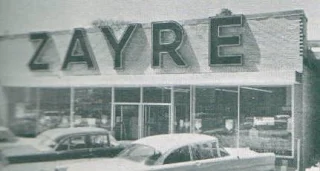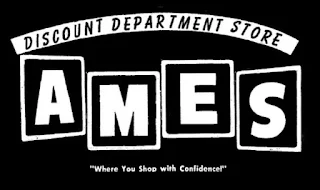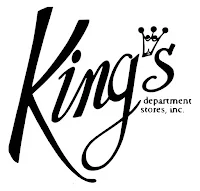The very first Zayre opened -in Hyannis, Massachusetts- in June 1956. This Zayre mother store covered only 5,000 square feet!
Photo from Zayre Corporation Annual Report 1966
The Zayre logo of 1963.
By the mid-1970s, the company was being promoted with this trademark.
Store patrons check out a Zayre Ladies' Fashions section.
Stores often featured a freestanding Zayre Auto ServiceCenter.
Graphic from Zayre Corporation Annual Report 1964
This trademark was the standard Zayre symbol 7 years later.
Graphic from Zayre Corporation Annual Report 1970.
Graphic from Zayre Corporation Annual Report 1975
The GOLDEN GATEWAY store opened in Chattanooga's center city in 1964. In addition to a full-line discount department store, the shopping complex included studios for WTVC-TV (Channel 9) and a Shoney's Big Boy restaurant.
Drawing from Zayre Corporation Annual Report 1963
A nighttime snapshot shows the Saugus, Massachusetts unit. Zayre stores stayed open till 10 pm.
Photo from Zayre Corporation Annual Report 1964
The standard issue "Zayres" health & beauty aids department.
Photo from Zayre Corporation Annual Report 1967
Photo from Zayre Corporation Annual Report 1967
Photo from Zayre Corporation Annual Report 1967
A circa-1963 Ames trademark. The chain started, with a mill building store in Southbridge, Massachusetts, in 1958. At its peak, Ames operated 736 stores in the Northeast, Upper South, Midwest and District of Columbia.
Graphic from Ames Department Stores, Incorporated
In 1971, the building blocks logo was still in use.
Graphic from Ames Department Stores, IncorporatedAdvert from Ames Department Stores, Incorporated
This updated logo was introduced in early 1977. By 1981, Ames Discount Department Stores stretched from Maine to Maryland. There were 115 operating units. The company sustained one of the largest expansions in retail history between the 1970s and '90s. At the peak of the chain in 1988, there were 736 stores.
Graphic from Ames Department Stores, Incorporated
A 1990s version of the 1977 logo. The corporation had expanded exponentially by mergers and take-overs. Chains such as Big N, Murphy's Mart and Zayre were engulfed. All of this growth left Ames in massive debt. They declared chapter 11 bankruptcy in 1990.
Graphic from Ames Department Stores, Incorporated
Ames emerged from Bankruptcy # 1 in 1992. By 1998, the store count (including units formerly in the Hills chain) numbered 600. The new century found the Ames chain in dire financial difficulty once again. Bankruptcy # 2 was filed in August 2000 and was eventually changed to a liquidation. By September 2002, the remaining 327 Ames stores had been shuttered.
Photo from "Zayre88"
Before there was Mammoth Mart, there was Mammoth Mills. The first "Shopping Center" (which was a single, discount department store) was dedicated, in Framingham, Massachusetts, in March 1956.
Advert from the Mammoth Mills Company
As with Caldor, Ann & Hope and Ames, the first store in the Mammoth Mills chain was set up in a vacant mill building. The Mammoth mother store was located in Framingham, Massachusetts and opened in March 1956. In 1962, the corporate name was changed to Mammoth Mart. Soon after, "Marty" the elephant was adopted as a store mascot.
Graphic from Mammoth Mart, Incorporated Annual Report 1964Mammoth Mart operations covered between 43,000 and 88,000 square feet. Stores sold general merchandise, with no supermarket section.
Photo from Mammoth Mart, Incorporated Annual Report 1964Customers crowd into a mid-century Mammoth Mart store.
Photo from Mammoth Mart, Incorporated Annual Report 1964
By 1973, there were sixty-eight Mammoth Marts in Connecticut, Massachusetts, Maine, New Hampshire, New York, North Carolina, Pennsylvania, Rhode Island and Vermont. The tanking of the United States economy, in 1974, brought an abrupt end to the chain. It was sold to King's Department Stores, Incorporated -of Newton, Massachusetts- in 1978.
Graphic from Mammoth Mart, Incorporated Annual Report 1973
The Mammoth Mart acquisition was something akin to the blind leading the blind. The transaction left King's financially overextended. The enterprise was out of business by the mid-1980s.
Graphic from King's Department Stores, Incorporated


























